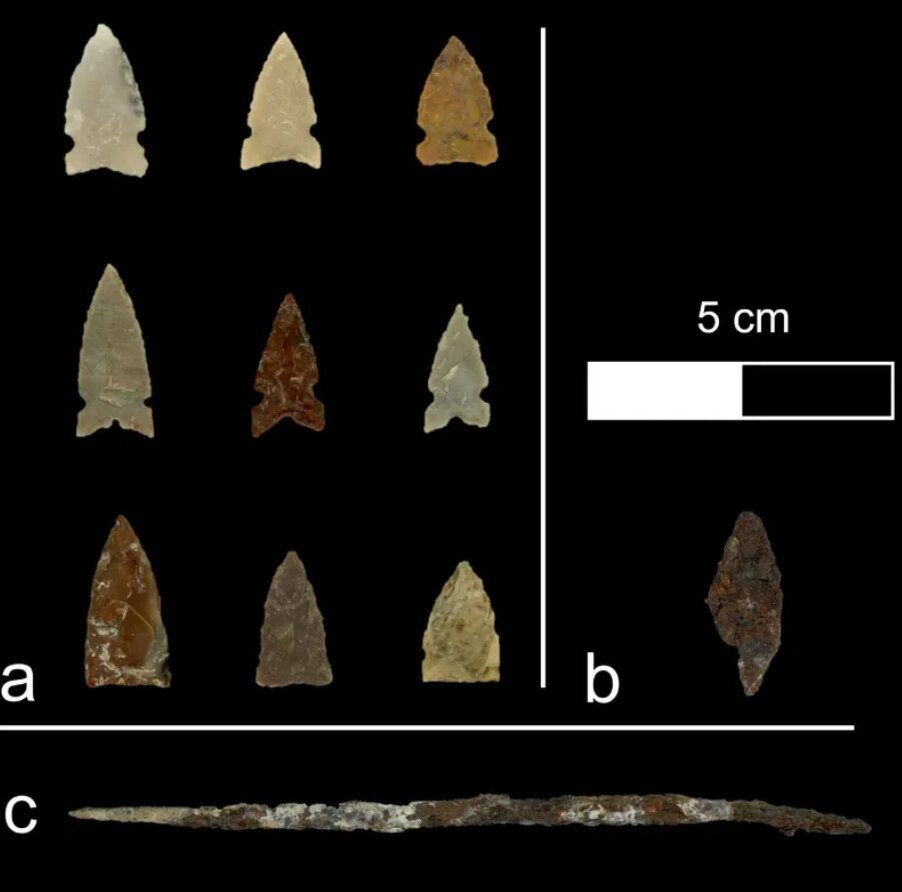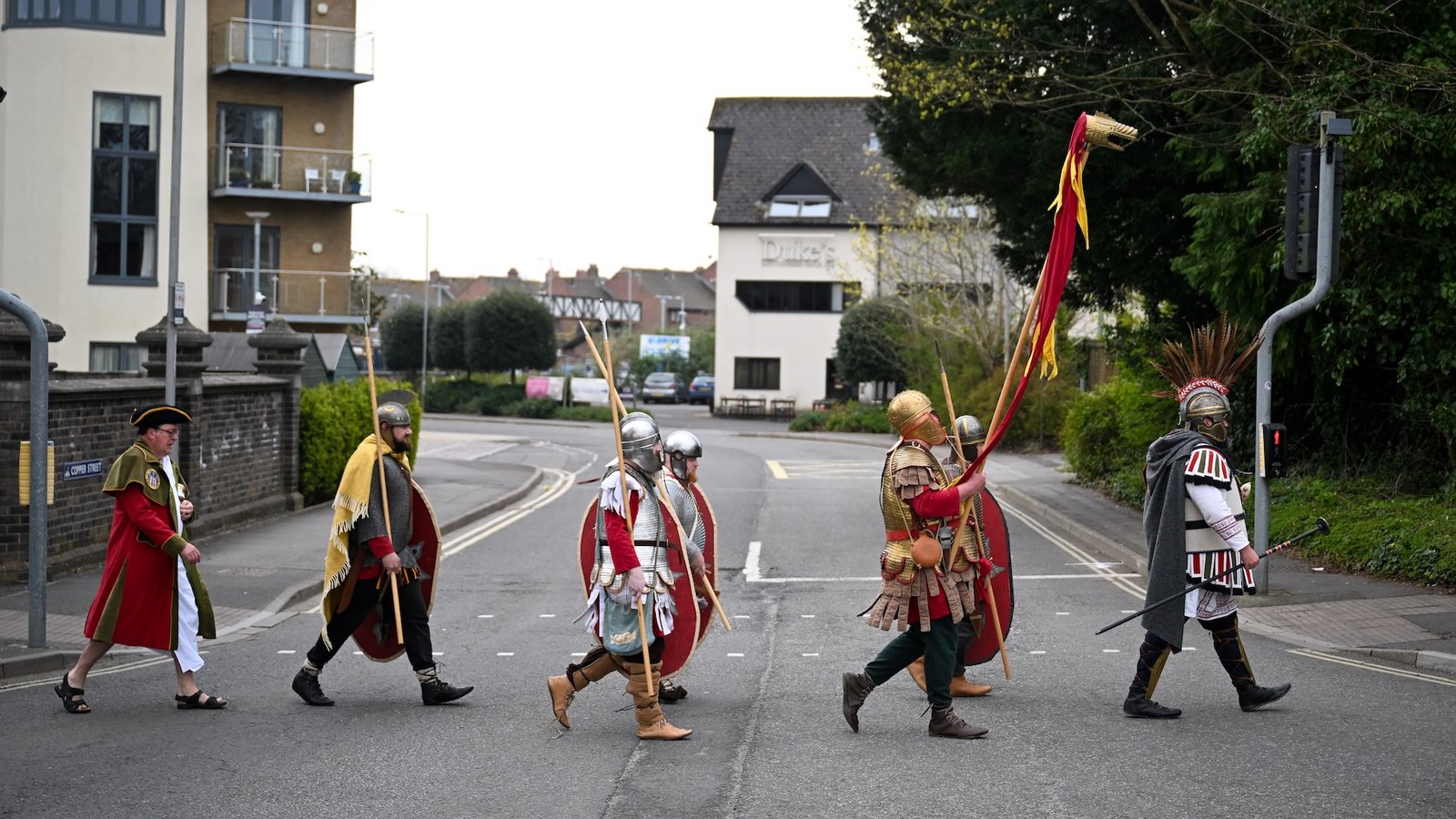
Dr. Spencer Pelton and his colleagues have conducted a comprehensive analysis of the River Bend site (48NA202), Wyoming. The site, located near the North Platte River in Casper, Wyoming, was excavated in the 1970s as part of salvage efforts prior to construction leveling. Their findings have been published in Plains Anthropologist.
Despite hundreds of square meters being excavated, it is estimated that almost 75% of the site was lost. The site had likely been occupied around AD 1700–1750, thus placing the site’s occupation after Euro-American contact, but still early enough that the site was in a transitional phase, using a mix of pre-contact and post-contact material culture.
At the time, the original investigator analyzed some of the recovered artifacts, determining that the site was likely occupied by people ancestral to the Eastern Shoshone Tribe.
Dr. Pelton states, “The original investigator, Carolyn Buff (a co-author on this study), thought it might be Shoshone based on several of the recovered artifacts, including the point types, steatite, and teshoas. Tri-notched arrow points like those from River Bend are often found in Shoshone sites.
“Steatite (or soapstone) is commonly found in sites in the Shoshone heartland of western Wyoming, most often carved into large flat-bottomed bowls. Teshoas are a unique artifact form that are basically split cobbles used to process hide.
“The combination of these items suggested to the original investigators that the site might be related to a Shoshone occupation. These are all good lines of evidence, but there remains the potential that other cultures used these items as well.”
Despite these insights gained from analysis of some of the recovered artifacts, the full assemblage had never been analyzed. Dr. Pelton and his colleagues estimate that the site contained more than 5,000 artifacts, including bone, stone, ocher, metal, shell, and antler, making River Bend the richest adornment assemblage in Wyoming.
“River Bend was excavated with high standards, but the collection had been neglected for about 30 years prior to our involvement,” explains Dr. Pelton.
“Collections research always requires doing some ‘archaeology of archaeology’ to piece things back together. It wasn’t in horrible shape, but there were labels missing from artifacts, field notes missing (or undiscovered), and other pretty common things that happen to collections when they’re housed in labs rather than a repository.
“As a result, we were unable to assign locations to some of the adornment artifacts that may have added some interpretive depth to our spatial analysis.”
In spite of this, the study was able to provide a comprehensive analysis of the assemblage. Plains Indian clothing and body adornment often incorporated costly or difficult-to-obtain objects. These adornments signaled status, war accomplishments, and society membership, among other things.
Many anthropologists are most familiar with adornments reported in ethnographies, photographs, and pictures, often highly influenced by post-contact trade. The River Bend site, being a transitional site still early in the post-contact period, provides a rare glimpse into the adornment culture of the time.
Among the finds were shell disk beads, a common adornment often found in the early Great Plains and other North American cultures. These were often strung on necklaces or documented in graves around the neck, wrists, and ankles of the deceased.
The presence of Olivella sp. shells, another type of adornment, have been found in small numbers throughout prehistory and into the historical period. Their recovery at River Bend indicates the occupants engaged in long-distance trade in order to obtain the marine gastropod shells.
From later historical contexts, we know these were worn as necklaces, sewn into shirts, and used as earrings, and it is likely they served similar purposes in the pre-contact period.
Meanwhile, the findings of both mollusk shells and elk ivory pendants provide insights into changes in adornment practices. While shell pendants have been recovered from as early as 1500 BP, the type found at River Bend is not seen in historical images.
Only some paintings made by Bodmer in the 1830s show images of shell pendants. Meanwhile, elk ivory pendants are common adornments seen in historic photos and reported by traders, explorers, and ethnographers.
It seems the aesthetic role of shell pendants was replaced by elk ivory pendants sometime between Bodmer’s 1830s depictions and the advent of photography.

Finally, the site provides evidence that shell bead production likely made use of metal awls, which were also recovered at River Bend.
This has particular implications, explained Dr. Pelton, “We haven’t yet found awls like this at other sites, but it seems to be among the first types of items from these early contact era sites. The most popular items traded for at this early time are usually utilitarian items similar to tools that had already been made in Plains Indian society for thousands of years out of stone or bone.
“Things like metal awls, needles, knives, kettles, and axes. Once metal arrowheads started to be made, chisels and files for their production also became popular trade items. Metal tools lasted longer and often performed better than their stone and bone equivalents, so they were sought after very soon after contact.”
It is likely that the introduction of iron awls dramatically increased the production of shell ornaments, which, unlike elk, bird, and canid bones, were more abundant and easy to obtain.
The study provides insights into early post-contact Plains Indian adornment. How practices persisted in spite of European contact and how they changed, incorporating new technologies while still maintaining old methodologies.
Written for you by our author Sandee Oster, edited by Lisa Lock, and fact-checked and reviewed by Robert Egan—this article is the result of careful human work. We rely on readers like you to keep independent science journalism alive.
If this reporting matters to you,
please consider a donation (especially monthly).
You’ll get an ad-free account as a thank-you.
More information:
Spencer R. Pelton et al, Early eighteenth century plains Indian adornment at the River Bend Site, Wyoming, Plains Anthropologist (2025). DOI: 10.1080/00320447.2025.2530336
© 2025 Science X Network
Citation:
Wyoming archaeological site reveals Native American adornment practices in the 1700s during early European contact (2025, August 5)
retrieved 5 August 2025
from https://phys.org/news/2025-08-wyoming-archaeological-site-reveals-native.html
This document is subject to copyright. Apart from any fair dealing for the purpose of private study or research, no
part may be reproduced without the written permission. The content is provided for information purposes only.




